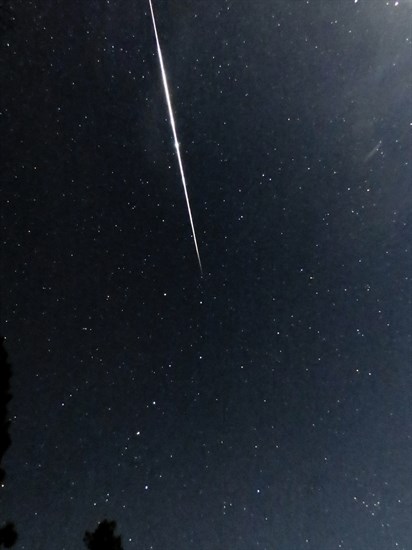
A Taurids fireball over Washington early this morning, Nov. 2, 2015.
Image Credit: Rocky Raybell via Flickr
November 02, 2015 - 8:00 PM
THOMPSON-OKANAGAN - The Taurid meteor shower is one of the longer meteor showers, running from September through December every year, but this year it could be more active than usual with the possibility of fireballs tearing through the sky later this week.
The Taurid meteor shower only produces about five to 10 meteors per hours and will peak Nov. 5 in the early morning hours though some skywatchers believe the mornings leading up to that could also produce a good show. A second peak, the North Taurids, is expected Nov. 12 and Nov. 13.
NASA scientists are saying this year could be more active than usual with the chance of more bright fireballs.
The ‘shooting stars’ can be seen anywhere in the sky, but will radiate from the Taurus constellation, making the best time to view the meteor shower after midnight, when the constellation is high in the sky, and the sky is dark and clear. Viewing is best away from city lights.
The Space Weather Prediction Center has also issued a storm watch for the auroras, meaning if the skies stay clear we could see fireballs and northern lights this week.
Unfortunately Environment Canada is currently calling for cloudy skies throughout the region beginning overnight Nov. 3, which means the chance of seeing the peak of the shower this week is low.
The Leonid meteor shower also runs this month, with the peak expected Nov. 17 and Nov. 18. The Leonids are known for producing some of the best meteor showers, though recent years have seen only about 10 to 15 meteors per hour.
Want to try your hand at some night photography? Try out these tips to get you started.
To contact a reporter for this story, email Jennifer Stahn at jstahn@infonews.ca or call 250-819-3723. To contact an editor, email mjones@infonews.ca or call 250-718-2724.
News from © iNFOnews, 2015